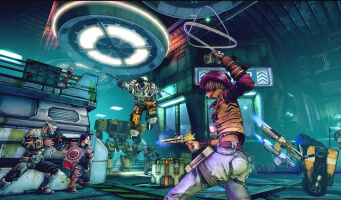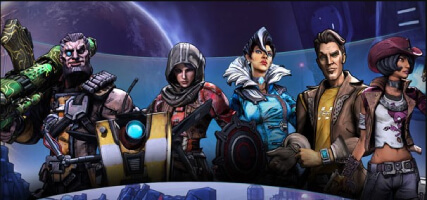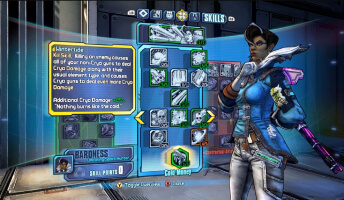Borderlands: The Pre-Sequel - Visuals and Gameplay, Revisited
Gearbox Software decided to give us fans a newer version of the mainline games we are already familiar with in Borderline: The Pre-sequel. Sitting between Borderlands 1 and 2, this game tries to fill in the blanks while offering new mechanics and a few added touches.
I wouldn't say it's perfect, but it nails a few things in ways the core series never quite touched. So, is it enough for you to try out? And is it worth your time? You're about to find out.
Gameplay

The biggest gameplay twist in The Pre-Sequel is the low-gravity system. Since the game takes place on Elpis, Pandora's moon, you get aspects that relate to being in space, like the floaty jumps, extended airtime, and slams that feel satisfying when timed right.
Oxygen management is one part of the game you have to pay attention to. You've got to watch your O2 meter when outdoors, which can be annoying at first but becomes second nature once you realize how it's also tied to boosts and double jumps.
As for weapons, the usual Borderlands touch is intact. You'll still get special guns, stats, and some elemental combos. But the addition of cryo (freeze) and laser weapons spices things up. Freezing enemies mid-run-and-gun never stops being fun, especially when they shatter into chunks like loot piñatas. The laser rifles bring some much-needed variety, even if some feel like glorified SMGs.
Characters

Unlike the previous versions, The Pre-Sequel lets you play as characters you used to fight or see in side quests. Claptrap, Athena, Wilhelm, and Nisha each feel radically different. Claptrap, in particular, is pure chaos and probably my favorite so far. However, I don't expect a lot of players to fancy using him.
His skill tree is unpredictable, often backfiring in spectacular ways (on purpose). It's a risk to use him, but that's part of the charm. Each character has their own type of combat and personality perks that add a bit more replay value.
Visual Appeal

Borderlands always leaned on its comic book-style cel-shading, but The Pre-Sequel tries to implement some surprising changes. Since you're on the moon, there's more cold blues, purples, and whitewashed landscapes. It's a shift from Pandora's rust-and-dust color palette, and while some areas can look a bit too empty, others look visually appealing, especially when you're bouncing through low-grav caverns lit by glowing crystals or laser lights.
The HUD got a moon-themed polish, too. Menus are cleaner, icons are sharper, and the sci-fi UI bits fit better with the setting than in previous games. It's not a complete visual overhaul, but it's enough to keep it from feeling like a simple reskin.
Does It Feel Like a True Sequel?
This is the tricky part. Technically, it's not a sequel. It's safer to call this a spin-off that fills narrative gaps. But gameplay-wise, it tries new things and pulls it off better than most spin-offs do. The level design makes use of vertical space, the oxygen system is a new touch, and the combat is still tight, fast, and just as loot-driven as ever.
But what I'll say The Pre-Sequel lacks is variety. After a while, moon bases and domes start to blur together. Enemies get repetitive. The pacing in the middle of the campaign lags. But thanks to the solid shooting mechanics and skill trees, most players won't mind grinding a few extra levels just to try out a new build.
Final Take: Worth It?
If you're coming into The Pre-Sequel expecting a true successor to Borderlands 2, temper those expectations. It experiments more than Borderlands 3 did and takes risks with characters, movement, and tone. That earns it some respect in my book.
The gravity system alone is enough to make combat feel fresh again. While the updated visuals are not mind-blowing, they do hold up surprisingly well. It's not essentially worth playing, but if you're a fan of the series and want something slightly offbeat but still familiar, this moon run might surprise you.

